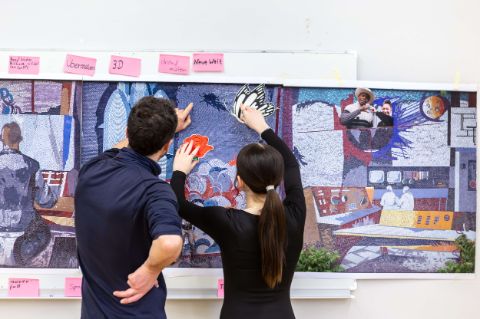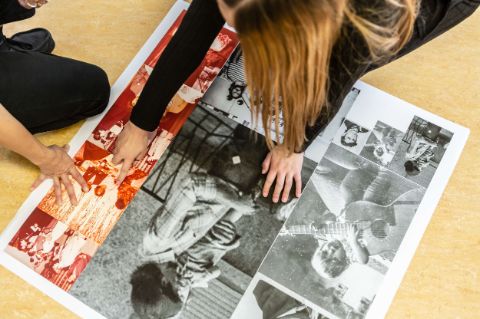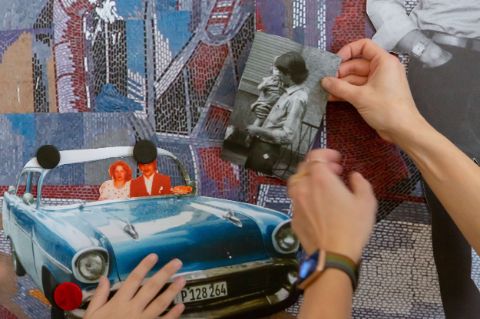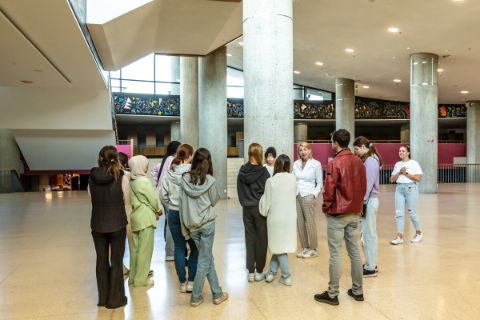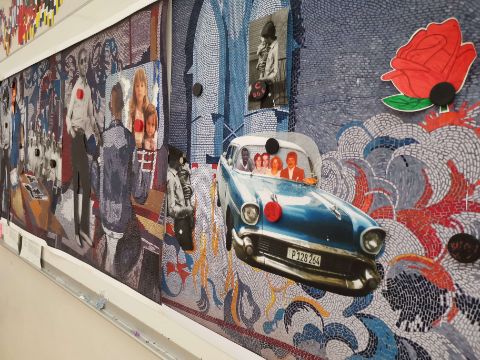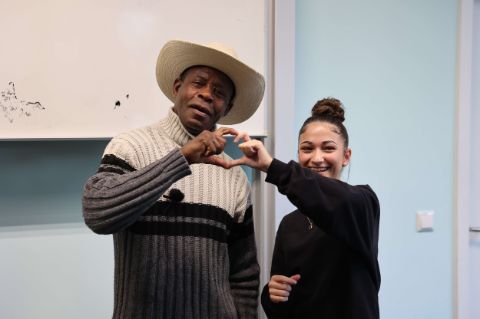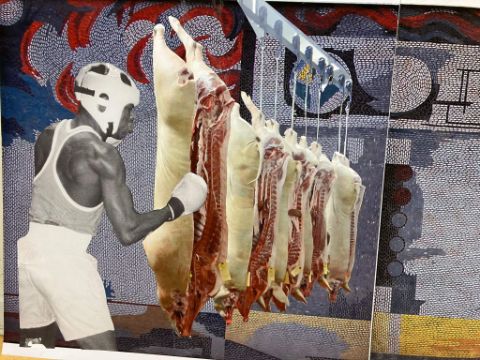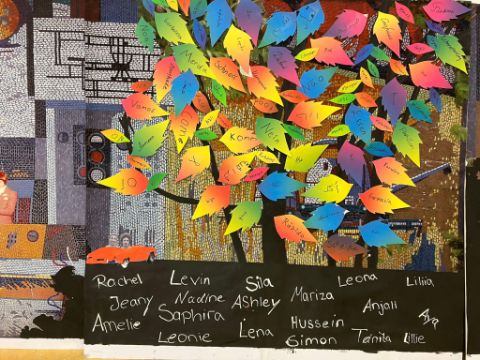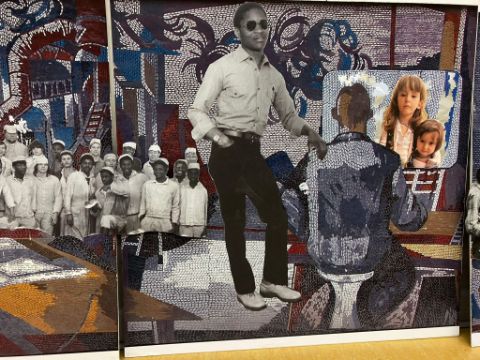Art in Public Space
Between Dream and Reality
School Project: Sophie-Brahe-Gemeinschaftsschule
As part of their engagement with the Echos der Bruderländer project, the 10th grade art course at the Sophie-Brahe-Gemeinschaftsschule went in search of traces of the German Democratic Republic (GDR) in the surrounding urban space. At the Potsdam Rechenzentrum (computer centre), they encountered a socialist realism mosaic series by Fritz Eisel with the evocative title Der Mensch bezwingt den Kosmos (Man conquers the cosmos). One of the panels shows a figure wearing blue work overalls standing alongside researchers in white lab coats. It is possible that the mural depicts someone who came from one of the GDR’s brother countries as a contract worker.
Seeking to find out more about the lives and experiences of these contract workers, the students met with Ibraimo Alberto and Alina Simmelbauer, two contemporary witnesses with biographical connections to the GDR and its brother countries during the 1970s and 80s. Alberto came from Mozambique at the age of 18 to study sports but, despite his Muslim faith, ended up working in a canning factory where he was required to butcher pig carcasses. Simmelbauer, in contrast, followed the traces of an old postcard from Cuba as an adult to meet her father, who was a contract worker in the GDR and had since left. Theirs are just two stories among many that show how the reality of life and work in the GDR did not match the initial vision that had prompted many from the Bruderländer to move.
Through the creation of this discursive space, the students were able to reflect upon their own experiences of migration, arrival, and ‘foreignness’. For some students with a family connection to this history, questions about the visibility of migrants in everyday life in the GDR were raised for the first time, as well as questions about their relatives’ own paths to Germany. The resulting exchanges traced links to Cuba, Kosovo, Mozambique, Poland, and Syria, lending new contemporary resonance to historical migrant experiences. Drawing upon the earlier encounter with Eisel’s mural, this journey manifested itself in a collage, collectively produced by the students. This work aims to produce a newfound image of contract workers that not only deconstructs the often idealized version of their lives seen in GDR-era frescos, but also serves as a corrective via the inclusion of details from the individual stories that had been shared.
Participating school: Sophie-Brahe-Gemeinschaftsschule with Amélie Hilpert, Anjali Jagla, Ashley Mee, Aya Alfi, Hussein Ghoul, Jeany Thierfelder, Lena Bellach, Leona Hoxhaj, Leonie Rohde, Lillie Piellusch, Liliia Dremko, Levin Ramroth, Mariza Bäthge, Saphira Röhl, Sila Calgici, Tanja Trede, Rachel Kyeremeh
Teacher: Nadine Wünsche
Artists: Simon Brunel (Atelier Limo)
Contemporary witnesses: Alina Simmelbauer, Ibraimo Alberto
Works in the exhibition:
Zwischen Traum und Wirklichkeit (2023–24), collective mural produced by students in the tenth grade of the Sophie-Brahe-Schule, Berlin, guided by Simon Brunel (Atelier Limo) and Nadine Wünsche, collage on paper, 7 pieces, each (84 × 84 cm), video projection
